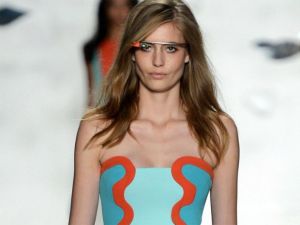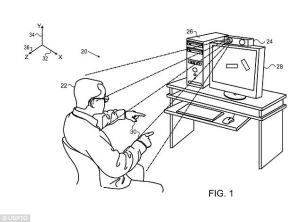Now that Google has pulled Glass off the market, for the time being at least, we’re left with a handful of questions that can’t be easily answered — even by a face-mounted computer.
Questions like, “What went wrong?” And, “What didn’t go wrong?” And, perhaps most enlightening of all, “How would Apple have gotten Glass right?”
While Phil Schiller, Apple’s senior VP of worldwide marketing, was not a fan of Glass, we’re certain Cupertino could have found success with a head-mounted wearable. Here’s how.
Apple’s design genius

No matter how well Google Glass worked, a sizable portion of would-be adopters would never wear it on the basis that it looked so … well, dorky. Glasses might be making a comeback thanks to thick-frame-wearing hipster types, but Google’s never been a company that places much emphasis on aesthetics or design.
That’s fine — possibly even great, when you’re offering a straight-to-the-point service such as Internet search. In the wake of cluttered “search portal” services like Yahoo, Google’s blank minimalism was a godsend to Web users back in late ’90s. While Steve Jobs spent weeks or even months agonizing over the right furniture to buy for his house, there’s something endearing about the fact that Google’s logo was quickly created by one of its CEOs messing around in Photoshop.
That approach doesn’t cut it when you’re talking about tech the world is going to spend more time looking at than even the smartphone in your pocket, however. Google tried to make Glass fashionable by teaming up with fashion designer Diane von Furstenberg to launch a line of frames that looked more like high-end eyewear and less like a sci-fi prop the Borg would wear in Star Trek.
This fashion push felt more like a last-ditch effort than something that was part of Google’s concept from the start, though. Apple, on the other hand, barely needs to mention its design credentials, so deeply are they ingrained in the company’s DNA. Cupertino is filled to the brim with designers like Jony Ive and Marc Newson, plus fashion industry execs like Angela Ahrendts.
Apple wouldn’t have muddied the waters by showing us an unfinished prototype and then trying to reverse-engineer a fashionable element on top of that. It would have built something gorgeous the first time around, and only showed it off when it was ready.
As shallow as it sounds, for a lot of regular consumers that would have been the difference between a tech laughingstock and a must-have gadget.
Apple would have picked its moment
Apple has been able, time and again, to seize the exact right moment to release new products. With genius-level timing, Cupertino avoids the early adopter hype cycle while not arriving so late to the party that everyone else has already moved on.
Typically, Apple will allow a few companies to enter a given space and make mistakes, then swoop in on that unofficial bit of market research and ruthlessly exploit it. Google never did this with Glass, and as a result looked like a company figuring out what it was doing as it went along. For a core group of techie customers, that’s a very admirable trait — but it’s not the way to convince the masses.
Apple would have timed its entry much better. And, once committed, Cupertino would have spelled out exactly why we should care about augmented reality to begin with. Which is something Google still hasn’t done.
Apple’s not creepy
From being overly conservative with its App Store to launching the occasionally misjudged music giveaway, Apple’s certainly not immune to criticism. However, when’s the last time you heard someone call out Apple for being creepy? Probably never, because Apple’s business model is completely different from that of data-hungry companies like Google and Facebook.
“You are not our product,” Tim Cook told Charlie Rose in a 2014 interview, making Apple’s position on personal data clear. “I think everyone has to ask, ‘How do companies make their money?’ Follow the money. And if they’re making money mainly by collecting gobs of personal data, I think you have a right to be worried and you should really understand what’s happening with that data.”
What does this have to do with Google Glass? Simple: People didn’t especially trust Google to begin with, and this was followed by dozens of alarming stories about the innate creepiness of Glass and the potential abuses of features like facial recognition.
As noted, Apple controls its App Store with an iron fist, which means that troublesome apps or ethically questionable features would have been stamped out from the start.
Embracing the Apple ecosystem

Augmented reality offers many possibilities for app makers. Even in its embryonic stages, Google Glass saw its fair share of them — from apps designed to help the hard of hearing by creating real-time conversation subtitles to language apps that can carry out handy translations of signs and other printed texts.
Apple is still the first choice for developers, and an Apple version of Glass would be able to draw on this to extend the wearable’s functionality over time.
What I’d be more excited about in the short term, however, is the possibility of using Apple’s Glass to interface with the company’s other devices. We know, for instance, that Apple has taken out multiple patents for Minority Report-style interfaces, which would offer new ways of interfacing with your Mac beyond the existing mouse and keyboard.
Having the ability to use your Google Glass-style headpiece seamlessly with your iPhone, Apple Watch and, going forward, HomeKit-enabled devices would have been compelling. There were some examples of this, but ultimately Apple was never going to fully embrace a device it wasn’t building itself.



